Much of the modern world was shaped by the fact that Europe had bland food and ugly clothing. Asia, on the other hand, did not. The exchange that ensued, colloquially known as the Silk Road, was a trade network bringing goods from Asia to Europe.
Although, if you needed to get from Asia to Europe, how would you do it? Remember that sailing around Africa only became an option when the Portuguese figured it out in 1488. Therefore, the best option for ~2,000 years was effectively…to walk.
Of course, some routes were better than others. For example, going through Russia was bad due to their notoriously harsh winters and the Caucasus Mountains presented a challenge to pass. This led to some common choke points that most routes tended to pass through.
Even today, if you wanted to walk from Tehran to Venice, your best route would be to go through one of the world's most interconnected cities: Istanbul.
If you were to show an alien a geographical map of the Earth and ask them to choose the best place for a city, Istanbul would be a pretty good choice. Not only is it a key choke point between two continents (half of it is in Europe and the other half in Asia), but all sea trade between the Mediterranean and the Black Sea must go through it.
This means that the strip of land bordering the Bosporus strait was, and continues to be, one of the most important geographical regions in history. It is no wonder that this city has been called the “city of the world’s desire.” Even today, Istanbul is the most populous city in Europe, and serves as Turkey’s economic and cultural hub.
I had the pleasure of going to Istanbul last year and found myself interested in the history of this ancient city. I was finally inspired to write this piece after reading Matt Lakeman’s Notes on Nigeria, hopefully it compares.
Byzantium
The city has gone through four major re-brands over the millennia. It was called Byzantium from 667 BC to 408 AD, Constantinople from 408 to 1453, Kostantiniyye from 1453 to 1930, and Istanbul from 1930 to today.
There’s even a fun song about it…
Most cities don’t have this many names, but most cities don’t change hands and religions and ethnicities as much as Istanbul has. This is ultimately why Istanbul is so interesting: it’s a blend of Christianity and Islam, Asian and European, Greek and Roman and Arabic and Turkish. We’ll get to all of these, but first let’s start at the beginning.
The city we now call Istanbul first entered into the historical record with Herodotus, who told us of a Greek named Byzas, who “founded” the city in 667 BC and named it Byzantium. Around this time, interactions between Eastern Europe and the Middle East were beginning to ramp up. Being right in the middle, Byzantium started getting passed around quite a bit.
Byzantium remained a Greek city state until Darius the Great folded it into the Achaemenid Persian Empire in 513 BC. It then briefly gets independence before getting sacked in 411 BC by Sparta in the Peloponnesian War as an attempt to cut off a key Athenian trade partner. Athens counters and took it back three years later. Eventually it was conquered by Alexander the Great around 340 BC (although he never actually stepped foot in the city). After the collapse of Alexander’s empire, Byzantium remained quasi-independent until around 190 BC when it became a Roman client state.
Or, if you prefer a timeline:
Despite being highly valuable, Byzantium was always on the outskirts of these large powers, it was never the heart of any empire. This was about to change.
Constantinople
By 300 AD the Roman Empire had reached its later stages and the succession battles were getting bloodier and bloodier. At the end of one of these wars the emperor Constantine takes power.
After winning the civil war he decided he didn’t really like Rome and thought it made sense to move the capital closer to the frontier of the empire. The famous apocryphal story says he identified the location for the new city in a dream. Either way, the new city that would become the capital of the Roman Empire was - you guessed it… Byzantium. Which was soon renamed to Constantinople.
Like any new homeowner, Constantine wanted to spice up the place, and the best way to do this in Roman times was to procure something Greek. The Romans idolized Greek culture and were very familiar, just as we are, with their greatest works. One of these works was the Serpent Column that was erected in Delphi to celebrate the Greek victory over the Persians 700 years before Constantine’s time. This was the perfect monument to put in his new city, so Constantine had it moved, 600 miles, from Delphi to Constantinople where it still stands today:
While the statue is cool, what Constantine did next actually impacted your life directly. There are some people in history that I call “butterfly effect” people where a single decision they made ended up having massive ripple effects that affected basically everything. Constantines being that he decided to convert to Christianity.
This was a really, really, really, big deal because Christianity was still small at the time and resembled a cult rather than an actual religion. Christians and other non-believers of the Roman imperial cult had been persecuted for hundreds of years. When Constantine took power only 5-10% of the Roman citizenry were Christians, but by the time of his death it was closer to 50%. What would have happened if Constantine had chosen another religion? Perhaps Christianity would have fizzled out like the dozens of other cults at that time.
Either way, Istanbul isn’t just “formerly a Christian city” it was effectively the original Christian city.
About a hundred years later you get the fragmentation of the Roman Empire as it split into East and West. The Eastern Roman Empire, also known as the Byzantine Empire, kept its capital as Constantinople. This “new” empire peaked in 565 during the reign of an emperor named Justinian.
As the Western Roman Empire had all but collapsed, Justinian had managed to greatly expand the borders of the Byzantine Empire. He also implemented sweeping legal reforms with his Corpus Juris Civilis which was one of the first works in jurisprudence that enshrined a principle we still live with today: Ei incumbit probatio qui dicit, non qui negat, or in case you don't know Latin: "Proof lies on him who asserts, not on him who denies."
Justinian’s wife, Theodora, who surely deserves her own essay, was an incredibly colorful character. Her most famous story is one of Churchillian bad-assery when riots in Constantinople caused Justinian to debate fleeing the city, she famously said:
May I never be deprived of this purple robe, and may I never see the day when those who meet me do not call me Empress. If you wish to save yourself, my lord, there is no difficulty. We are rich; over there is the sea, and yonder are the ships. Yet reflect for a moment whether, when you have once escaped to a place of security, you would not gladly exchange such safety for death. As for me, I agree with the adage, that royal purple is the noblest shroud.
But Justinian’s greatest achievement was building Istanbul’s crown jewel: Hagia Sophia, which looms over the city like an ageless titan, a testament to human ingenuity and resilience.
Looking like it was pulled right out of Star Wars, this building would be impressive if it were built today, let alone 1,500 years ago. You can count on one hand the number of buildings this old that still impose the sort of gravitational field that radiates around them.
Originally built as a church, Hagia Sophia was the largest religious building in the world for over 1,000 years. It remained a church until the Ottomans converted it to a Mosque in 1453, which has led to some very interesting religious workarounds. Jesus is also a relevant figure in Islam so they keep some images of him, but cover up others. I don’t pretend to know the theological reasons behind what gets covered up, but it definitely feels like you are in a church that got switched to a mosque.
You can see above the tarps covering some of the images of Jesus. You also can clearly see the Arabic text circle things that were put up after the fact.
If two religions weren’t enough, there are also columns that have engravings of the Greek God Poseidon’s trident. Istanbul has a lot of earthquakes, so in some variation of Pascal’s wager, Justinian hedged his bets and made sure that if there was going to be an earthquake it sure as hell wasn’t going to be because Poseidon was mad.
Perhaps my favorite part of the Hagia Sophia is the vestibule mosaic over the south door, created in the 10th century. It depicts Mother Mary sitting with baby Jesus (which for some reason isn’t covered up), with Justinian on the left bearing the Hagia Sophia as a gift, and Constantine on the right offering the city itself. This mosaic is the best encapsulation of the city as it relates to Roman and Byzantine history.
While the Hagia Sophia has maintained a presence in the city for 1,500 years, the same cannot be said for the Byzantine Empire, which slowly declined over the next 700 years. In 1204, the weak Constantinople was sacked by Latin crusaders on their way to Jerusalem during the fourth crusade. Being on the best land route from Europe to Asia also has its downsides.
Constantinople limped along as a regional power/city state for the next 250 years until it was sacked again in 1453 by Mehmed the Conqueror, who turned it into the capital of the Ottoman Empire.
Kostantiniyye
Technically the name Constantinople didn’t change with the takeover by the Ottomans, Kostantiniyye was just the Arabic translation (pronounced: con-stan-tin-ee-yeh). However, I think the change is notable, as 1453 marked one of the city's biggest transitions.
The Ottoman conquest of Kostantiniyye began the Islamification of the city. Aside from the symbolic changes, such as the conversion of Hagia Sophia to a mosque, the religions and ethnicities of the people also began to change. This wasn’t by force, it just happens that when you are a Christian city you get European Christian migrants, and when you're an Islamic city, you get more Muslims and Middle Easterners.
Right as Mehmed moved in, he began building a brand-new administrative center in the heart of the city called Topkapi Palace.
The palace was very large for its time, and it had to be, because the Sultan’s entire family lived there. And when I say “family” I basically mean “small army”. The Sultan didn’t have a wife - instead he had dozens to hundreds of concubines of which he had dozens to hundreds of children with. On top of this, all the Sultan’s brothers (of which there were dozens) also lived within the palace too. But when I say “lived within” I really mean “imprisoned”, as the Sultan’s children and brothers were not allowed to leave the palace. Find my essay about Ottoman succession practices here.
An attraction that originated early in the Ottoman reign is the Grand Bazaar. Often considered the world’s first shopping mall, it is one of the Earth’s largest covered markets with more than 4,000 shops. It was even the top tourist attraction in the world in 2014. The bazaar’s origins date back to Mehmed who erected the edifice to stimulate trade in the city he had just conquered.
I didn’t love the Grand Bazaar. It's a little claustrophobic considering it has 250K - 400K daily visitors, the equivalent of 3 Coachellas or 5 full football stadiums. Not really my scene, but it’s worth checking out.
Mehmed’s attempt to stimulate trade worked, as the Ottoman Empire grew significantly until its peak in the late 1600s. At their largest, the Ottomans controlled the Balkans, North Africa, and a sizable portion of the Middle East.
However, the Ottoman Empire slowly declined through the 18th and 19th centuries. They were so dysfunctional by the end of the 1800s that Czar Nicholas I labeled them the "sick man of Europe".
Speaking of the Czar, the Ottomans did not have a great relationship with Russia when World War I broke out. They had been fighting over the Caucasus region for a while and a quarter of all Russian trade passed through Kostantiniyye when traveling from the Black Sea to the Mediterranean. With the Russians firmly on the side of the Allied powers, the Ottomans decided to join Germany and the Central Powers.
This turned out to be a bad move, and Constantinople was occupied by Allied British and French troops in 1918. This was the first time the city had been captured since Mehmed the Conqueror, 465 years earlier.
Istanbul
The modern period is best defined in terms of Turkification. The Turkish people are an ethnic group that have lived on the Anatolian peninsula since the 11th century and formed the majority ethnicity in the Ottoman Empire. For thousands of years, Constantinople was a melting pot of ethnicities - Arabs, Kurds, Greeks, Armenians, Turks, and others, but in the late 1800s there was a steep rise in Turkish Nationalism. This led to skepticism of non-Turks, especially ethnicities that had ties to enemy countries, such as Greece and Russia.
This Turkish nationalism led to two big genocides between 1913 and 1923: the Greek Genocide and the Armenian Genocide. These two events combined for 1 to 2.5 million deaths of Anatolian Greeks and Armenians, and those that weren’t killed quickly fled to Greece or Armenia. Over the 100 year period from 1913 to 2013, Turkey saw a collapse of these populations - Greeks went from 6% to 0.4%, Armenians went from 10% to less than 0.1% - and Turks rose from 40% to 71% of the population. To this day, the Turkish government does not acknowledge either of the genocides.
While the origins of the Turkish Nationalist movement date back to the late 1800s, it really kicked into gear at the end of WWI. With the Allies occupying Constantinople, a competent Ottoman general and statesman, Mustafa Kemal Ataturk, consolidated power in the city of Ankara in the center of the country. He eventually led the Nationalists in the Turkish War of Independence to reclaim Constantinople in 1923 and founded the nation we know today as Turkey. The name Ataturk was given to him after the fact and literally means “father of Turks”.
Ataturk is the George Washington of Turkey and is the face you see on every Turkish Lira. Aside from his questionable involvement in the genocides (which was at best that he turned a blind eye), he was a strong leader that reversed decay and catapulted Turkish society into modernity. The first big change he implemented was republicanism. No longer would there be a Sultan with absolute power, but instead representatives who are elected.
Second, Ataturk saw that a key to western success was secularism, or the separation of church and state. The Ottoman Empire was the opposite with Islam consistently having a heavy hand in decision making. Ataturk made sure that there was no religious interference in government affairs.
Constantinople was also not immune to Turkification. Its name changed once again, this time to a Turkish name: Istanbul. It also lost its status as capital - Ataturk kept the capital of Turkey in Ankara after reclaiming Istanbul. Much of this probably had to do with convenience as Ankara was the base of operations in the Turkish War of Independence. However, it also was a symbolic gesture separating the new nation of Turkey from the Ottomans. By the end of the Ottoman Empire, Obi Wan may have called Constantinople “a wretched hive of scum and villainy”, bloated with corrupt bureaucrats - moving the capital was a symbol of change.
Turkey not only mirrored the Western ideals of secularism and republicanism, but it also began to cozy up to the West in more practical ways, such as defense. They say nothing is certain in life but death, taxes, and the Russians wanting Constantinople. With the USSR as powerful as ever, Turkey needed some allies to ensure they didn’t lose their most valuable city. This led Turkey to join NATO in 1952. Since then, Turkey has consistently had one of the largest militaries in NATO. As of 2020 they had the second highest percentage of GDP contributed to their military at 2.8%, behind the US at 3.7%.
Turkey is in a pretty rough neighborhood. In addition to having a big scary neighbor to their North, they don’t really get along with Greece and Armenia (for genocidal reasons), and to their south they border…Syria. They also have turmoil internally with the Kurds, who have wanted their own country since as early as 1920 but never got it. In fact, the Kurds are the largest ethnic group without a state, and Turkey has insisted that they remain that way.
The combination of these factors has necessitated that Turkey maintain a strong and involved military. Constantly putting down Kurdish revolts has also made them very used to operating within their own borders, something the US military can’t do. This has led the Turkish military to occasionally get involved in domestic politics - as there were four coups or coup attempts from 1960 to 2000.
This is all to set up the rise of Recep Tayyip Erdogan (pronounced: air-do-wan), who first entered the political arena as the mayor of Istanbul. The best synopsis of Erdogan is this ACX post on The New Sultan, but I will give a very brief summary.
Erdogan eventually got promoted from Mayor of Istanbul to the Prime Minister of Turkey in 2003, where he effectively remains today (technically he is now the president). Erdogan started off continuing the secularist traditions of Ataturk but eventually pivoted towards more religiosity. One example being the 2020 change of Hagia Sophia from a museum (which it had been since 1931) back to a mosque.
Erdogan has turned Turkey from a sort-of-democracy to a sort-of-dictatorship. Suing dissenters for corruption, packing the courts, and frequently changing the constitution, has made Erdogan one of the most powerful people in Turkey since Ataturk. The most generous reading of this is that he needed to break the hold that the military had over the country. After nearly getting deposed in the 1997 military coup, Erdogan realized he needed to consolidate power to not be overthrown himself.
Whatever his motive, the freedom scores of Turkey have steadily been dropping. Here is a quote from the ACX essay on Erdogan:
On Freedom House's measure of press unfreedom (where 0 is best and 100 is worse), Turkey went from 58 to 71 during the Erdogan years. On a political unfreedom score from 0 to 40, it went from 23 to 30. Turkish presidents are allowed to sue citizens who insult them; Erdogan's predecessor did this 26 times, his immediate predecessor 139 times, and Erdogan himself 1800 times.
When I was on a tour in Istanbul, Erdogan was in the news for walking around Central Park. I decided to ask our guide what he thought of Erdogan, to which he replied: “he wouldn’t dare walk around like that in Istanbul, he wouldn’t make it 100 meters.” Although our tour guide was a college educated secularist, the type Erdogan doesn’t usually appeal to.
However, there is one thing that Erdogan has done decently well while ruling Turkey: the economy. Although it has gone down since 2013, at its peak Turkey’s GDP per capita was triple what it was when Erdogan came into office.
The regression you can see in the chart over the last 10 years has caused Erdogan’s popularity to slump during his second decade of rule. One of the key economic issues has been inflation:
Inflation that high usually doesn’t lead to a happy populace - but it does lead to happy tourists! The purchasing power in Turkey, as represented through the Big Mac Index, is $2.68, which is 48% lower than the US.
More common in poorer countries, you still get that phenomenon in Turkey where the overlap between your consumer surplus and a seller’s producer surplus is quite large. There are many times when you think you are getting a great deal, but the seller is actually ripping you off!
I’ll now rapid fire through some other cool parts about Istanbul.
Mosques are awesome
Mosques are really beautiful structures, and they are everywhere in the city. Any skyline view of Istanbul will have hundreds of minarets (the pillars surrounding a mosque) protruding up. The number of mosques per capita greatly exceeds churches in any western city. One reason for this is that Muslims go to mosques a lot more than Christians go to church. Churches are popular on Sunday, but mosques are used every day, hence the need for more of them.
The other impact of having so many mosques is the prayer calls that happen six times per day. Here is an example:
Food
Turkish food is exactly what you would expect: Mediterranean with some Middle Eastern influence and more fish. As for the quality, the food in Istanbul was good if you knew where to go. Staying in the touristy area there were a lot of very aggressive hosts on the street trying to get you to eat at their empty restaurant. The food at these places was pretty average, but the drinks were especially bad. It felt like someone went to a random bar in NYC, wrote down three cocktails they had, came back and made sure every restaurant in Istanbul offered those exact drinks. It was like an Aperol Spritz, Moscow Mule, and a Mojito. One of the friends I was traveling with made the fateful mistake of ordering a vodka martini and getting a cup of vodka accompanied with the non-English speaking waiter calling him a “big boss!”. Considering Muslim’s aren’t known for being drinkers, this isn’t surprising - stick with the Turkish beer.
However, when we ventured out to the more local areas, especially when led by a food tour guide, the food experience was quite amazing. The below video is from one of the kebab places we went to, which was phenomenal even though it doesn’t look like much. The restaurant is called Kebapçı İskender, which is on the less-touristy Asian side of the city.
Two of the restaurants we went to served our food with those ornate metal domes over the plates. You rarely see this in the states, maybe at the nicest restaurants (certainly not ones that I go to), so getting two in the span of three days felt like it was potentially an Istanbul thing. My guess is it's playing on an old Ottoman tradition, given they look like this:
Cats!
One thing that you will definitely notice as you walk the streets of Istanbul is the number of cats you see. It is estimated that Istanbul is home to around 250,000 feral cats, alongside a very strict no kill no capture policy.
The cats first arrived during Ottoman times when the proliferation of wooden structures led to a rat problem. But other cities had wooden structures and rats too, right? Why don’t Western cities have a ton of cats running around?
The best guess is it has to do with Islam's very positive attitude towards cats, which ultimately allowed them to stick around. Either way, Istanbul does not have a rat problem… but New York on the other hand…
Verdict
Overall, I loved Istanbul. The people were amazing and the history was rich. If you are looking for something a little different next time you go to Europe, but don’t want it to be too different, then look no further than the city with many names.
Additional Reading
In preparation for this post I read Istanbul: A Tale of Three Cities by Bettany Hughes which I would highly recommend. (Also, the reason she says three cities and I said four is because she isn’t differentiating Constantinople from Kostantiniyye). This book covers the entire history of the city
If you want something that focuses more on the Ottoman period, I would go with Constantinople: City of the Worlds Desire, 1453 - 1924 by Philip Mansel. This one was pretty in depth, and I wouldn’t recommend it for everyone.


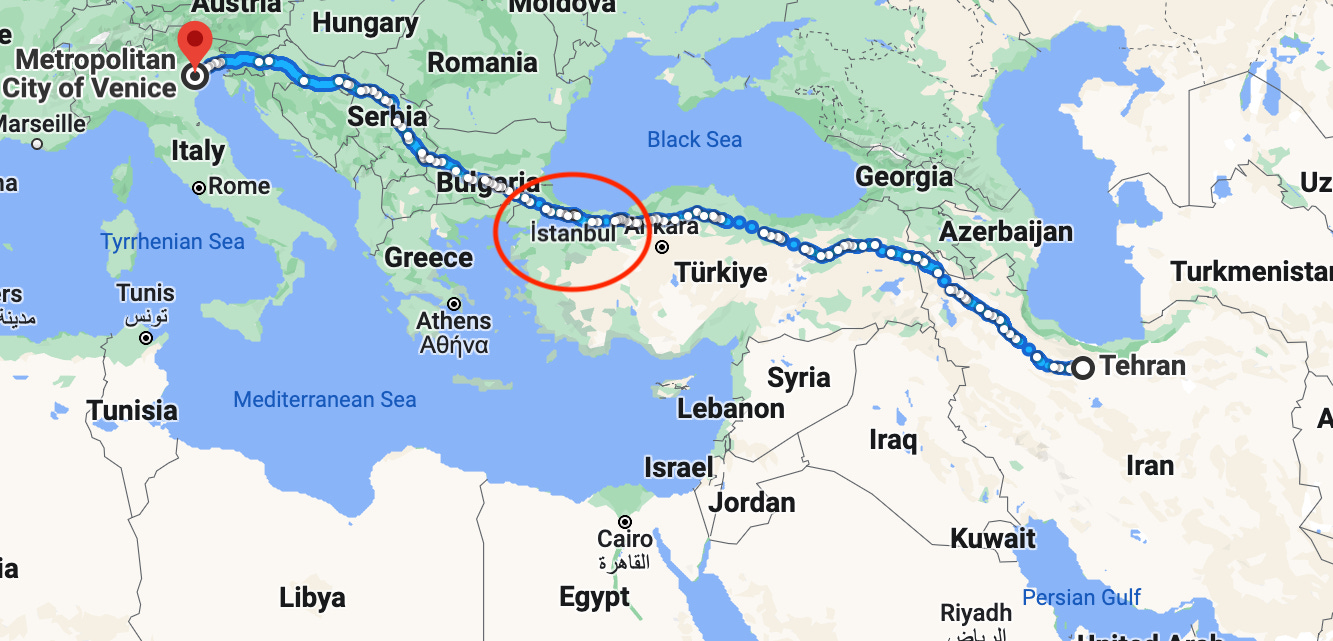
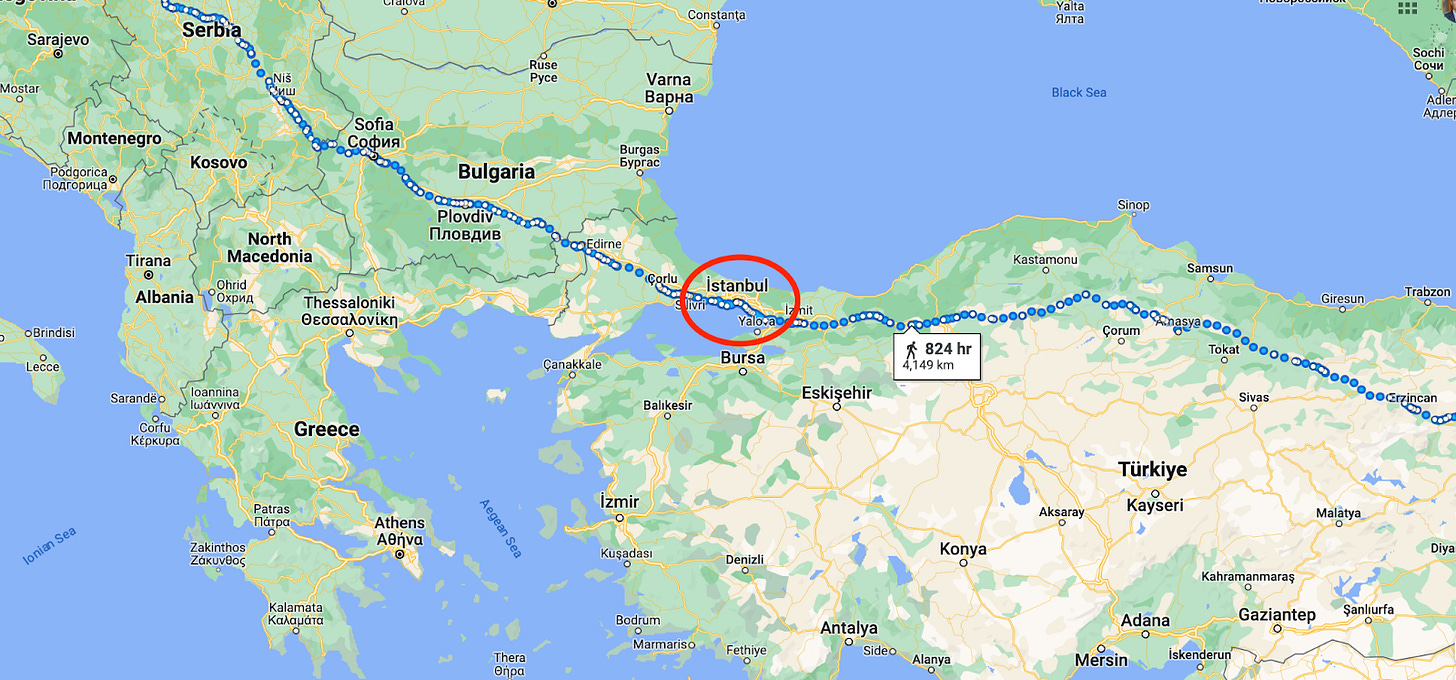
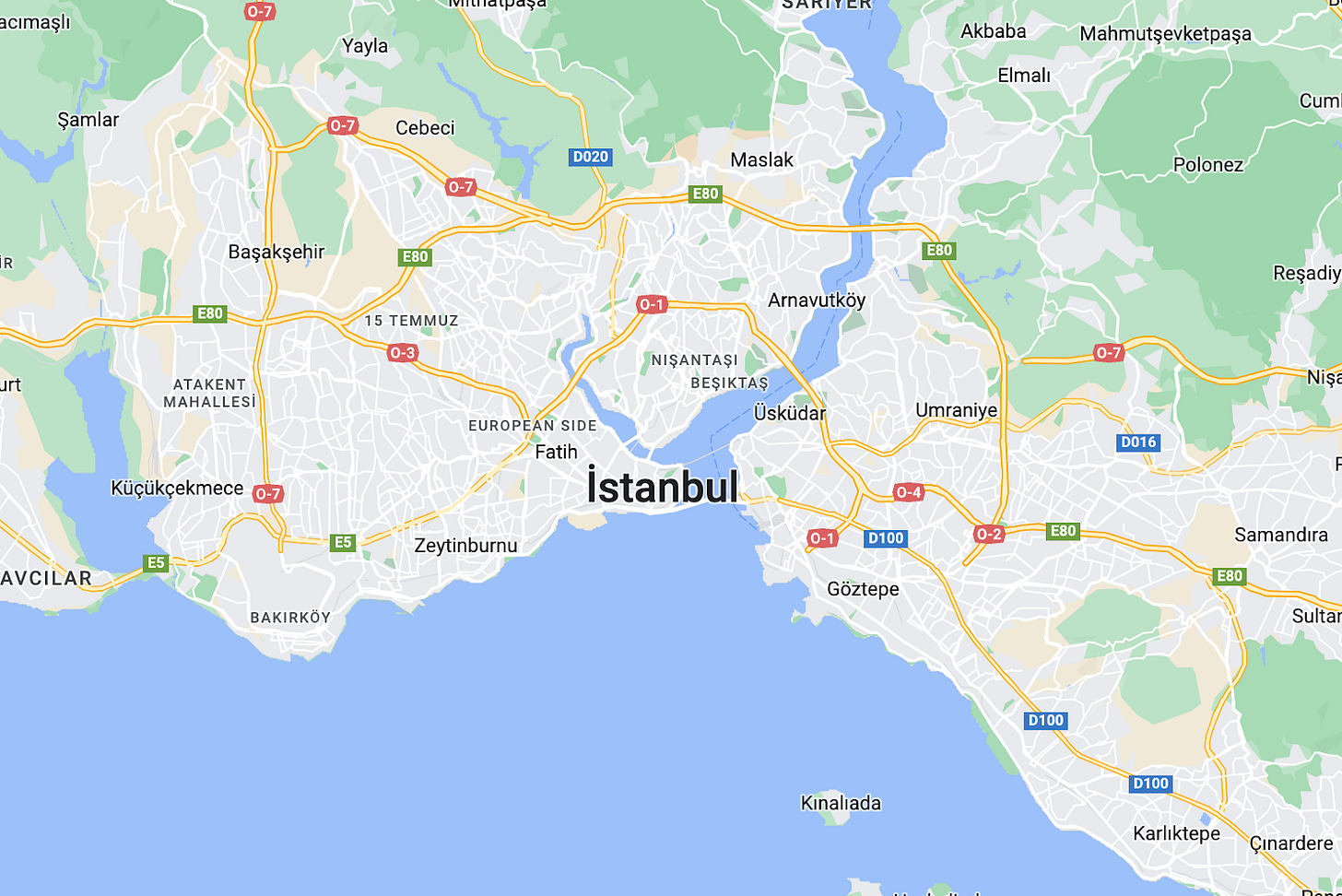

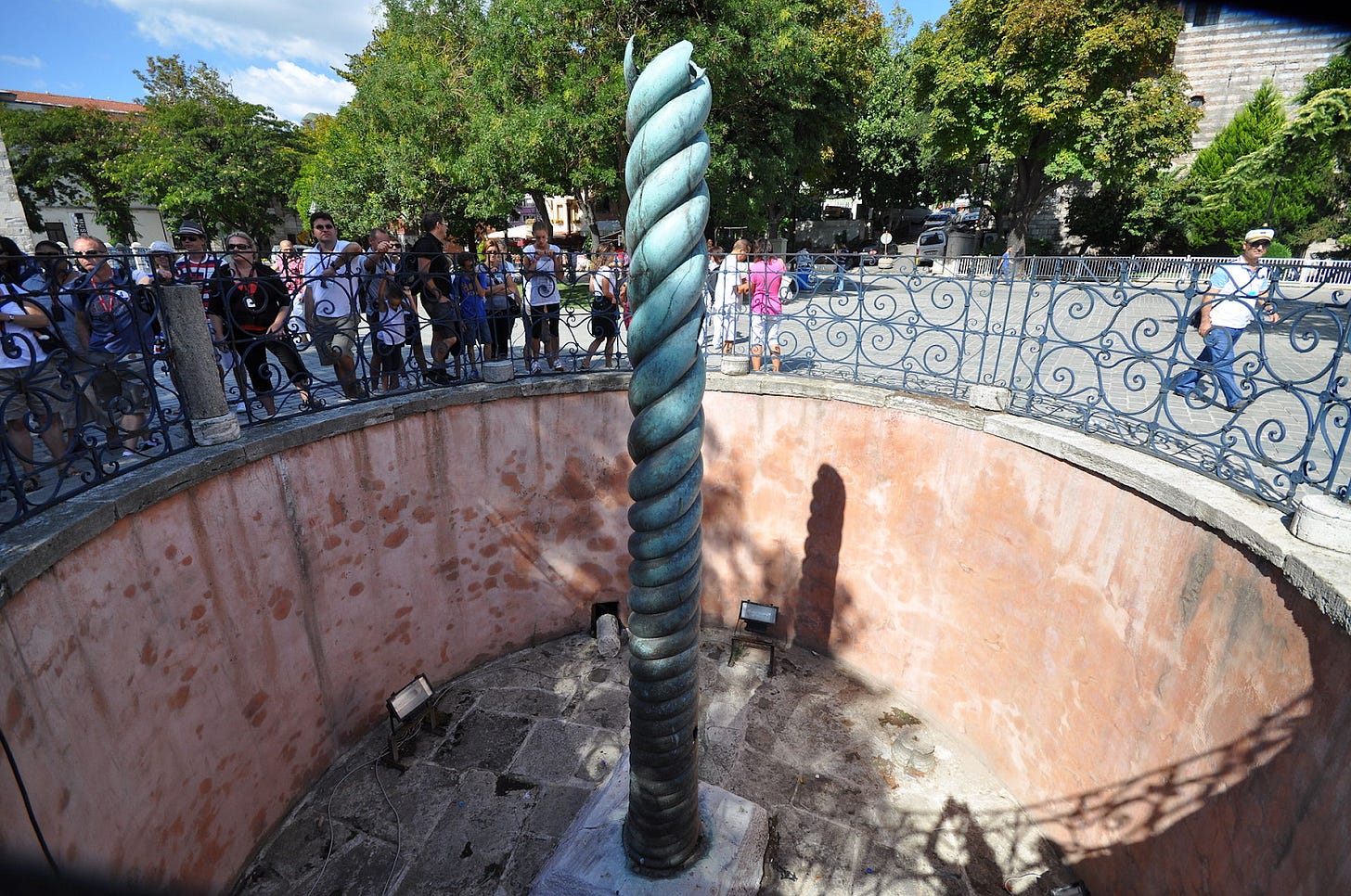
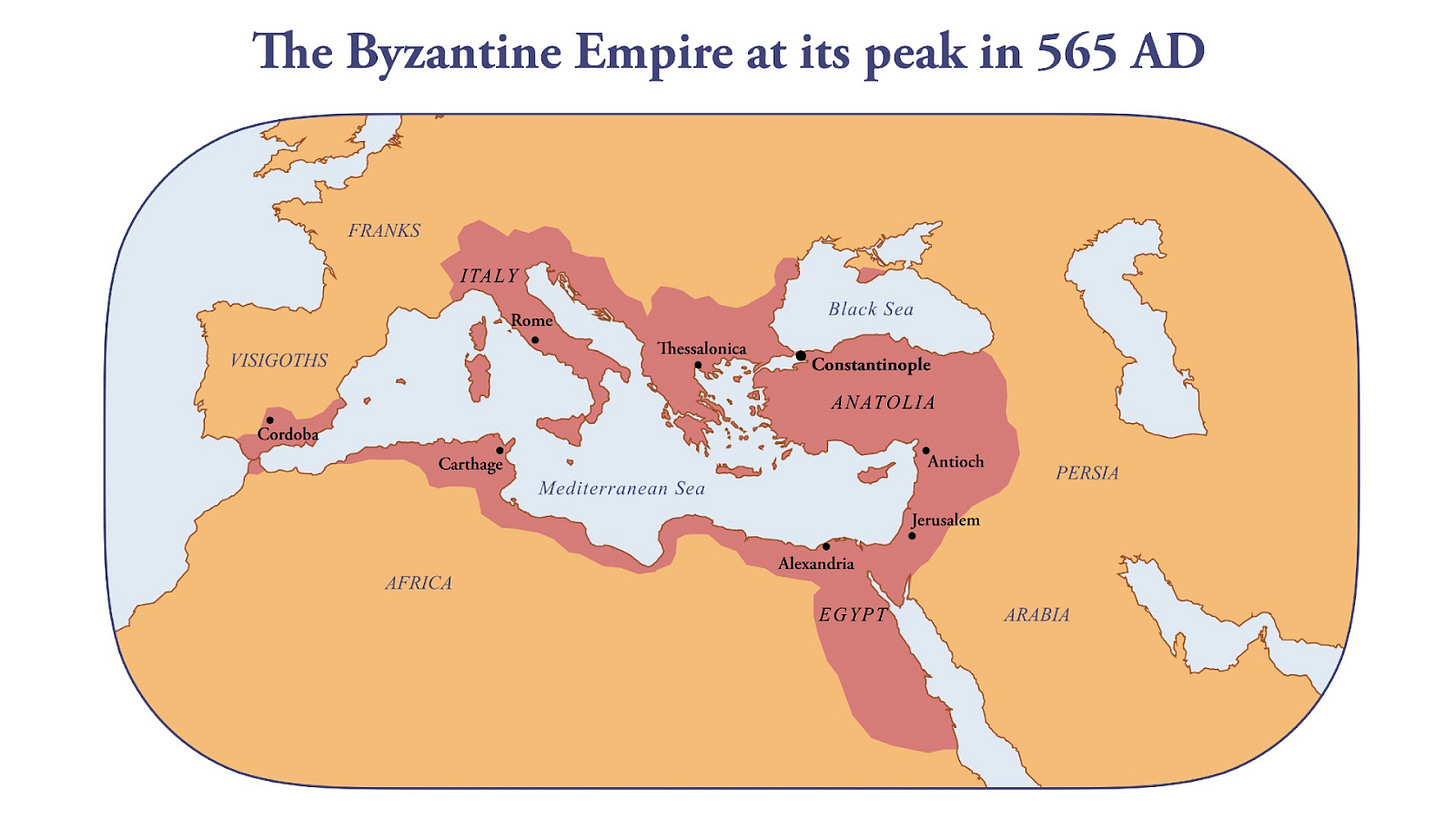
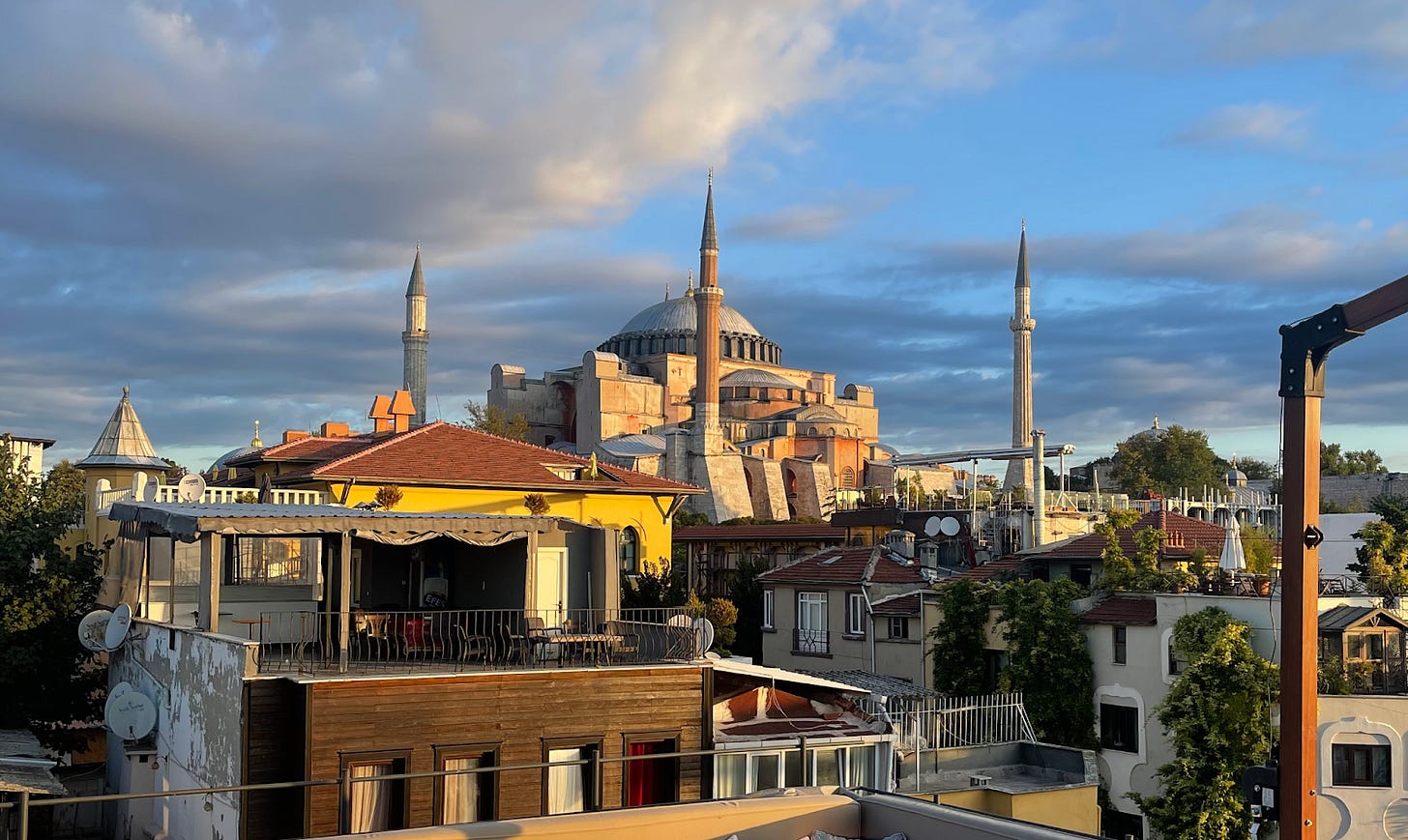
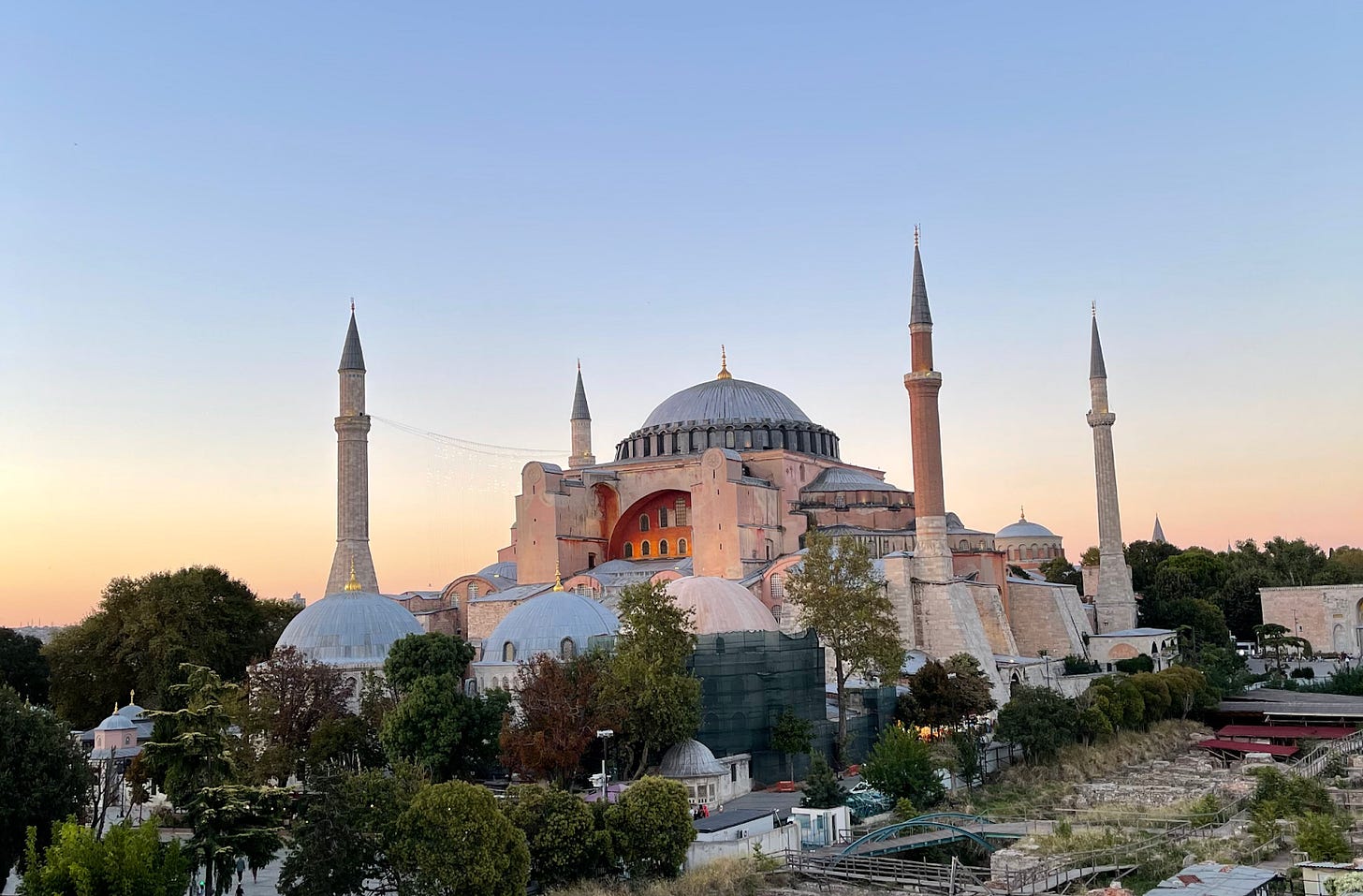
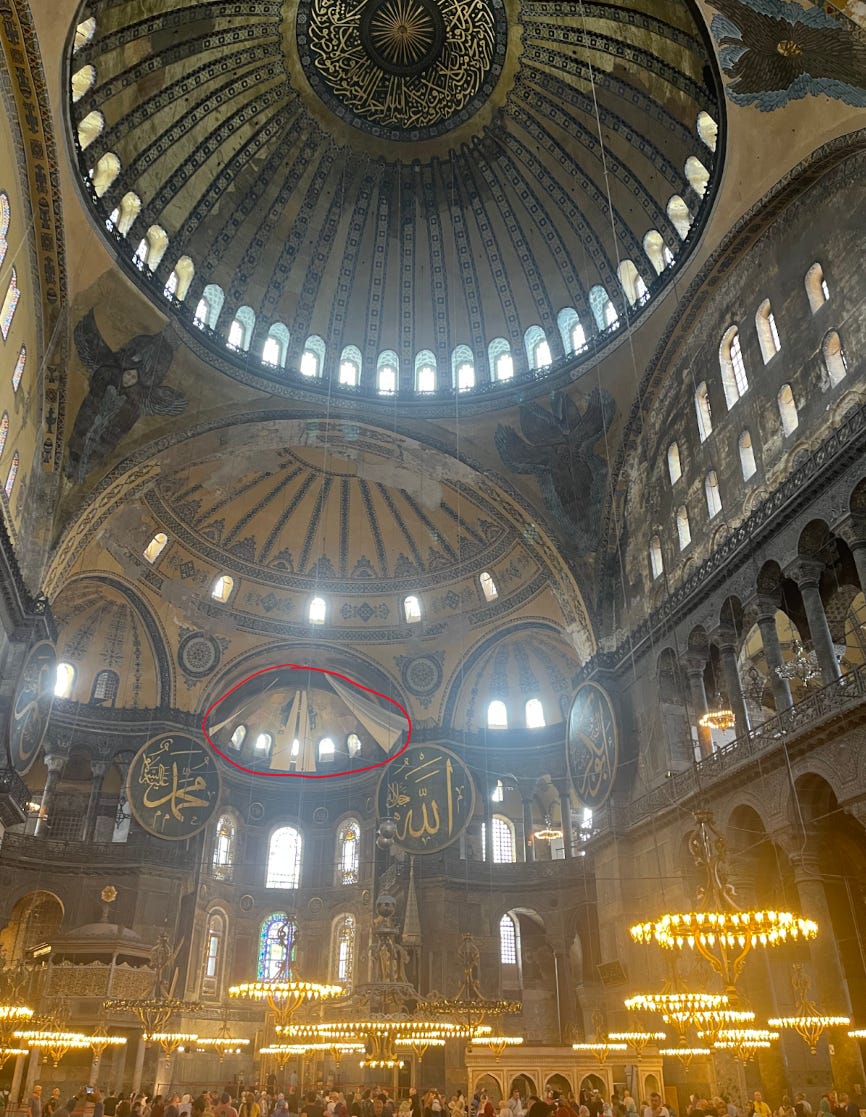
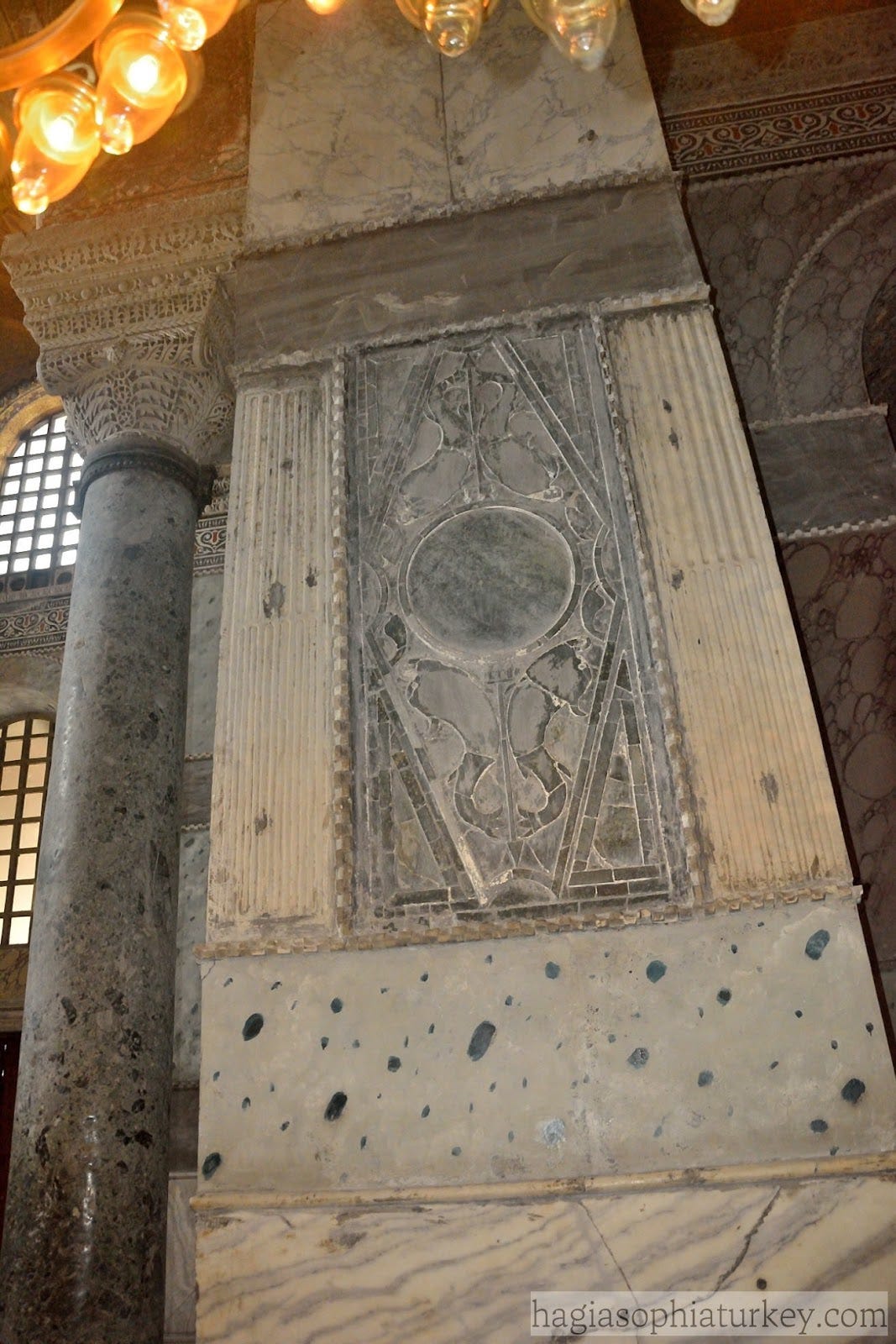
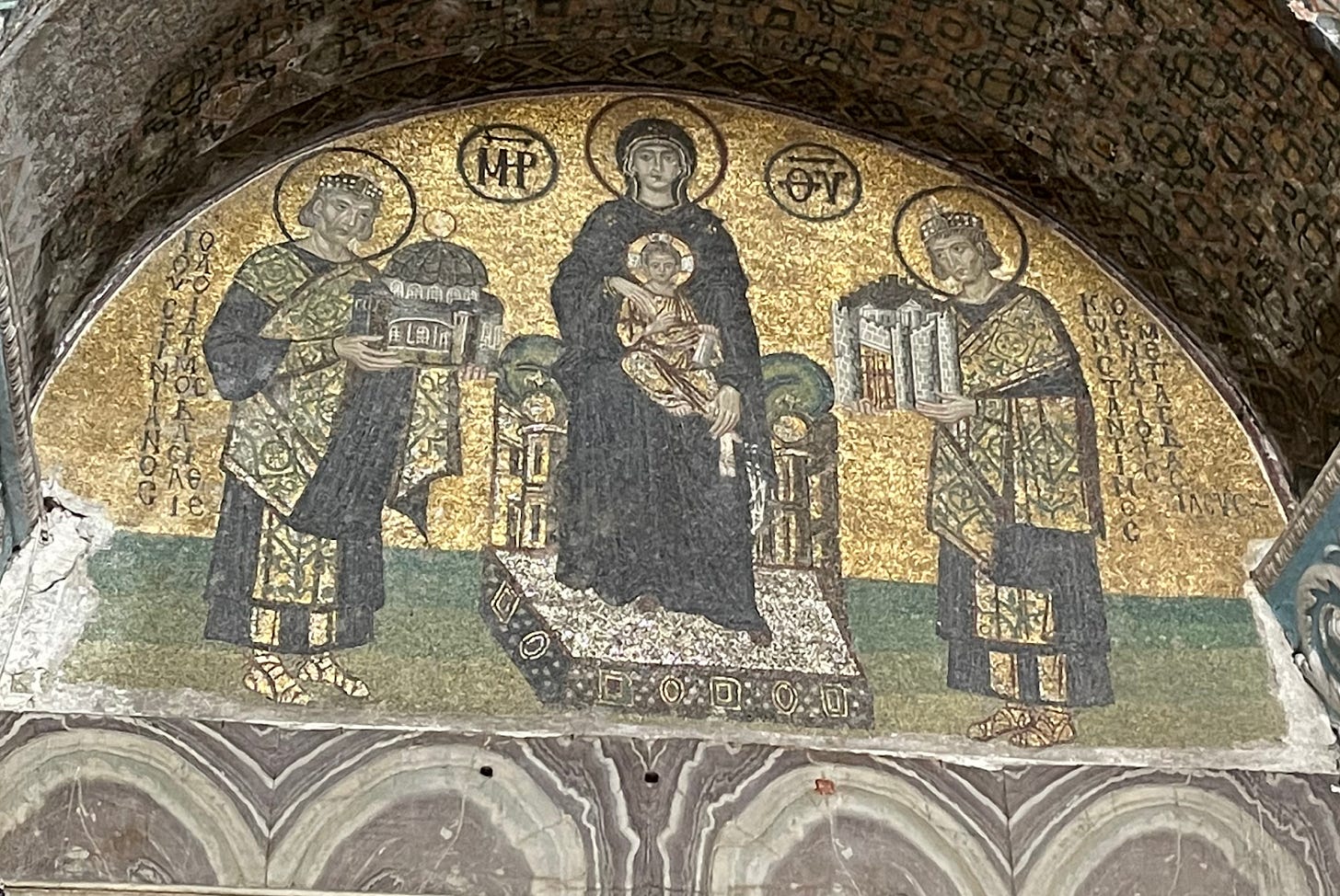
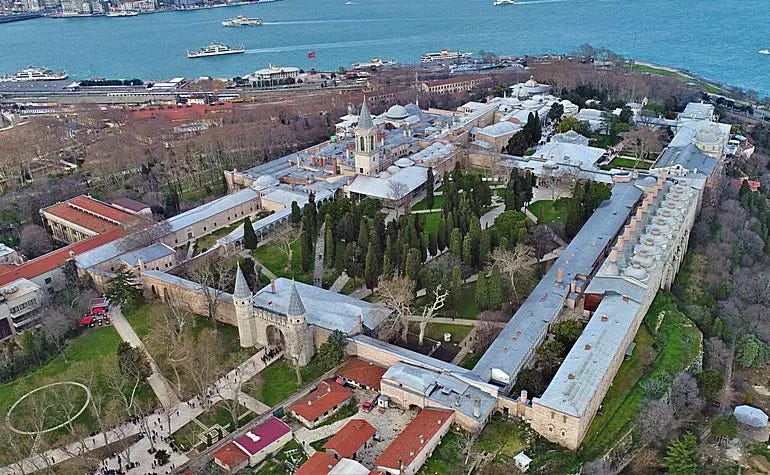
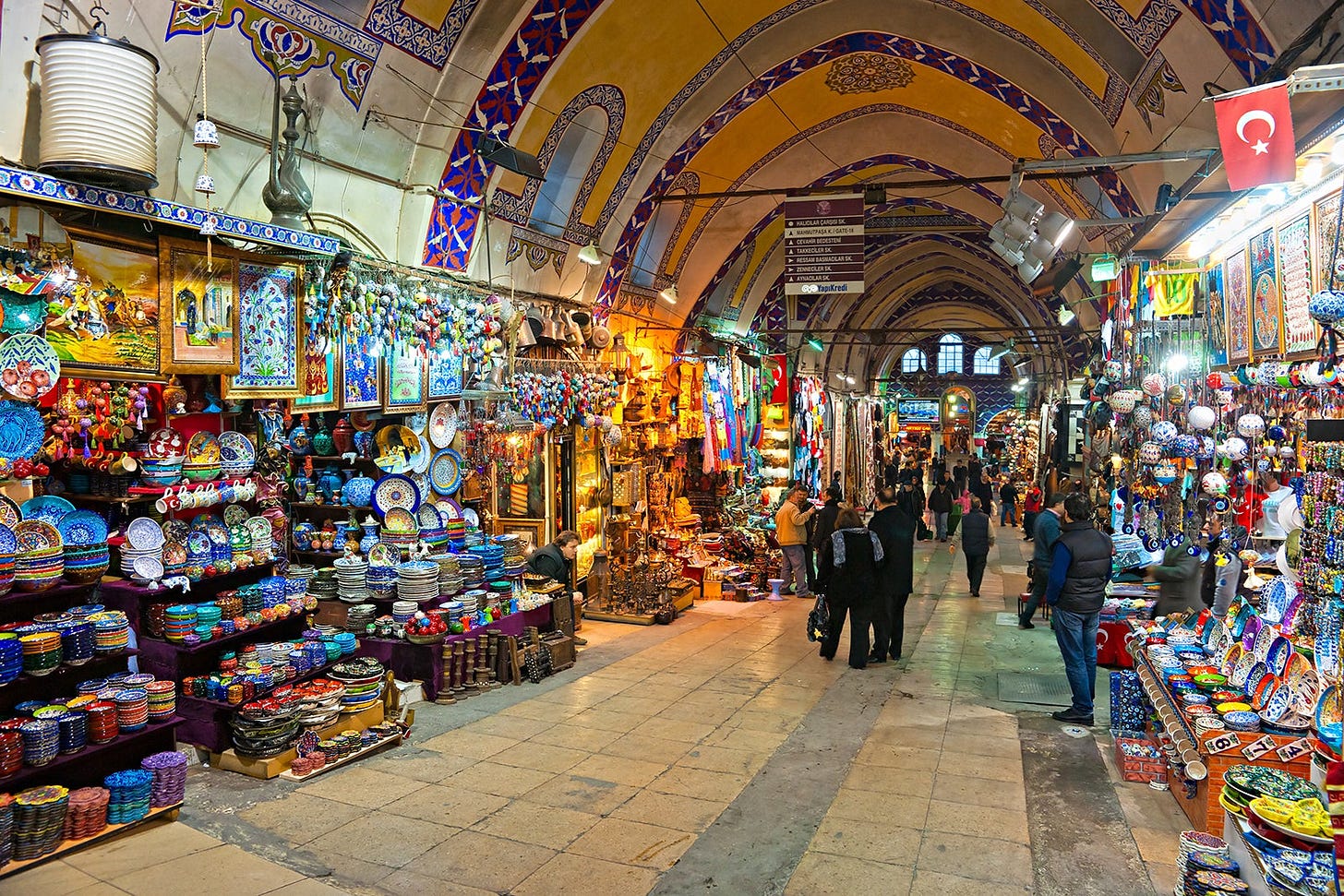
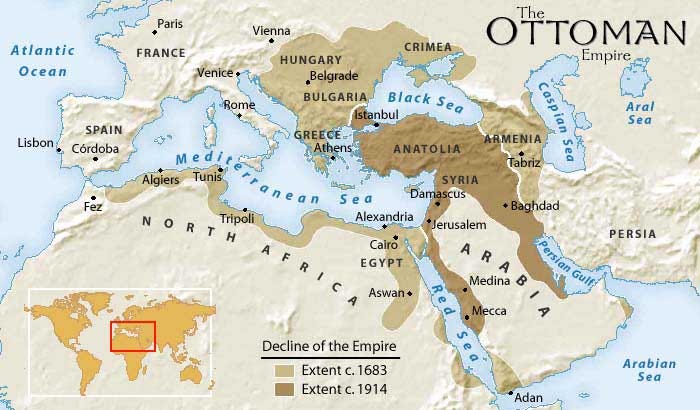
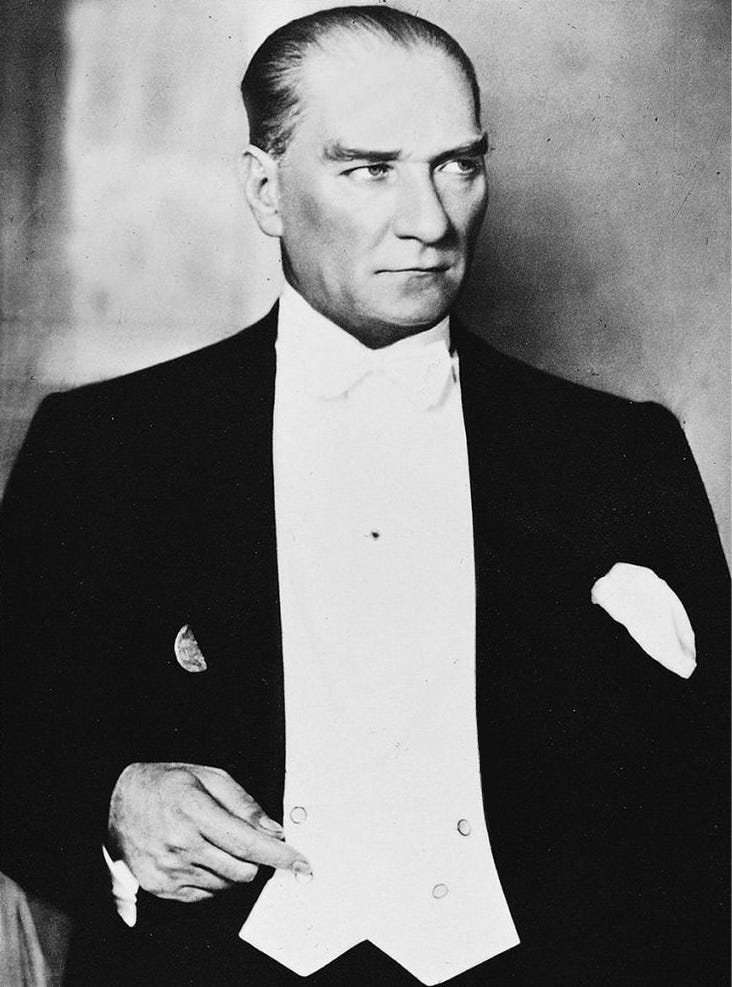
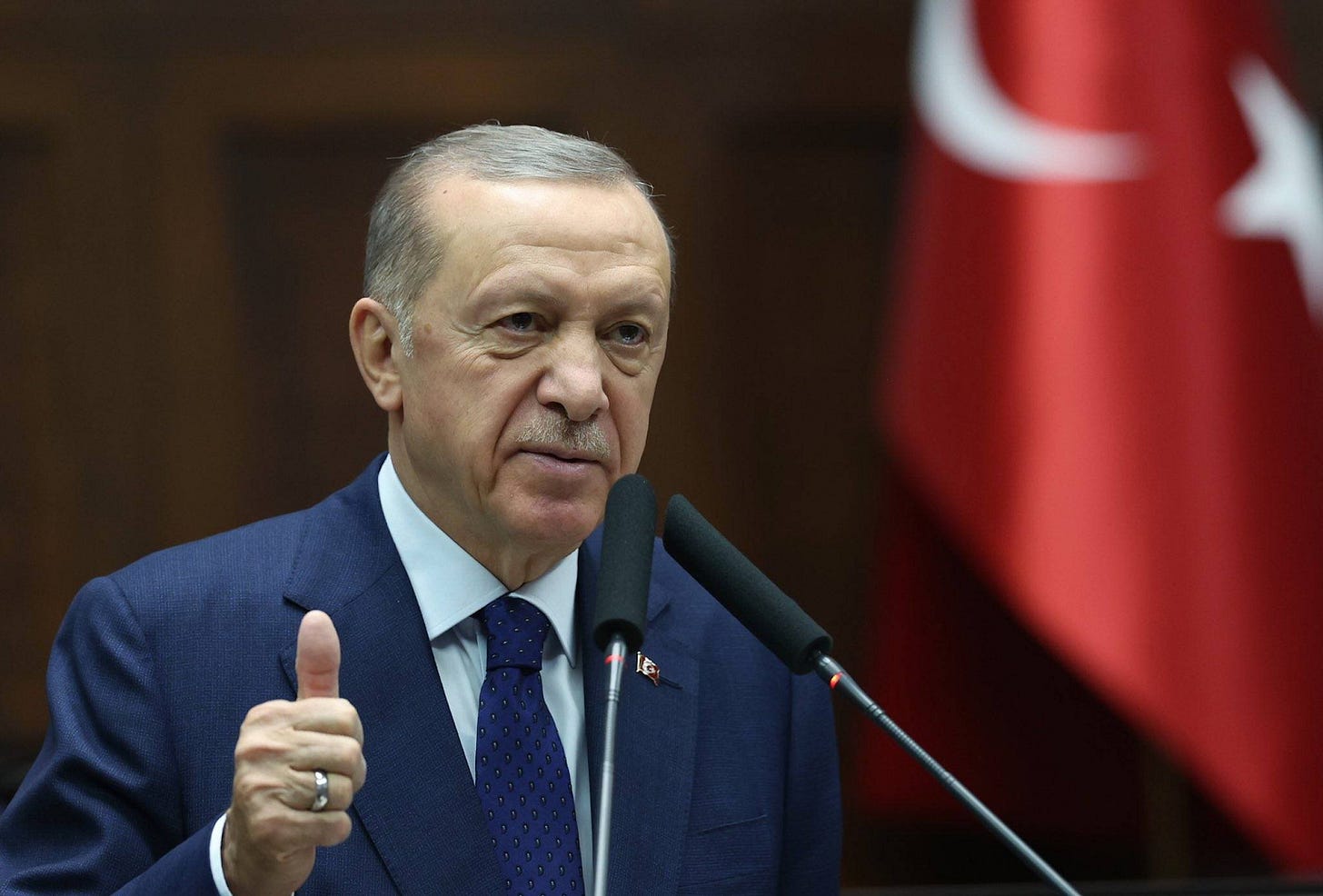
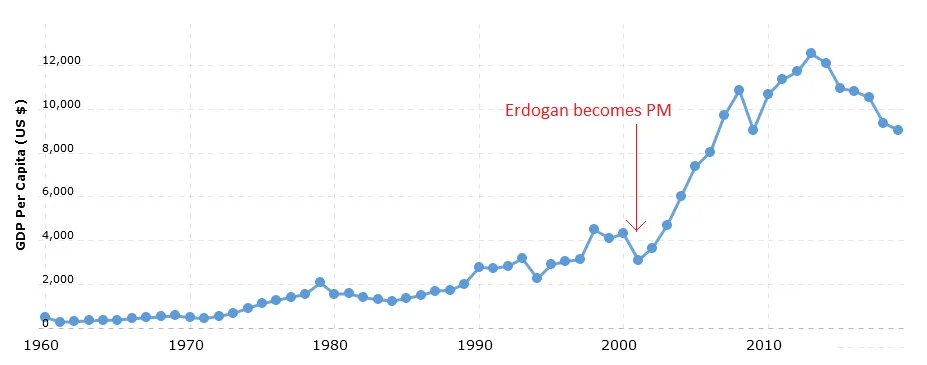
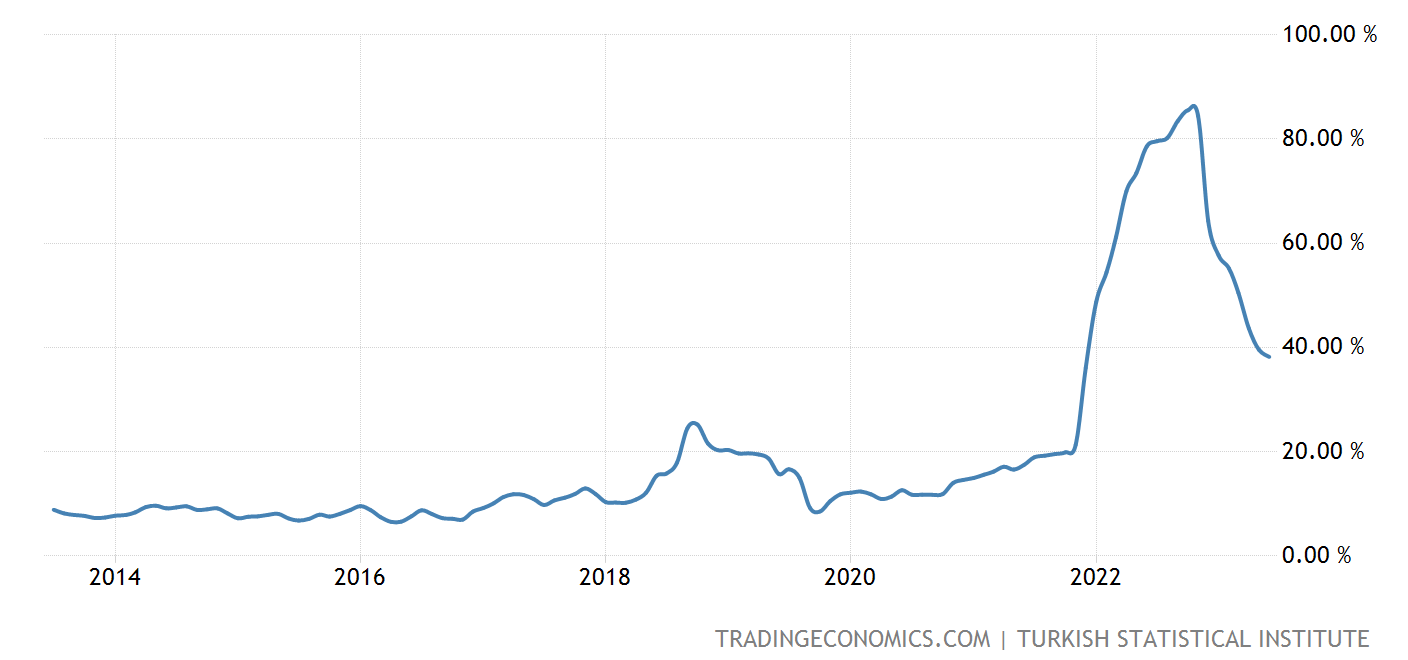
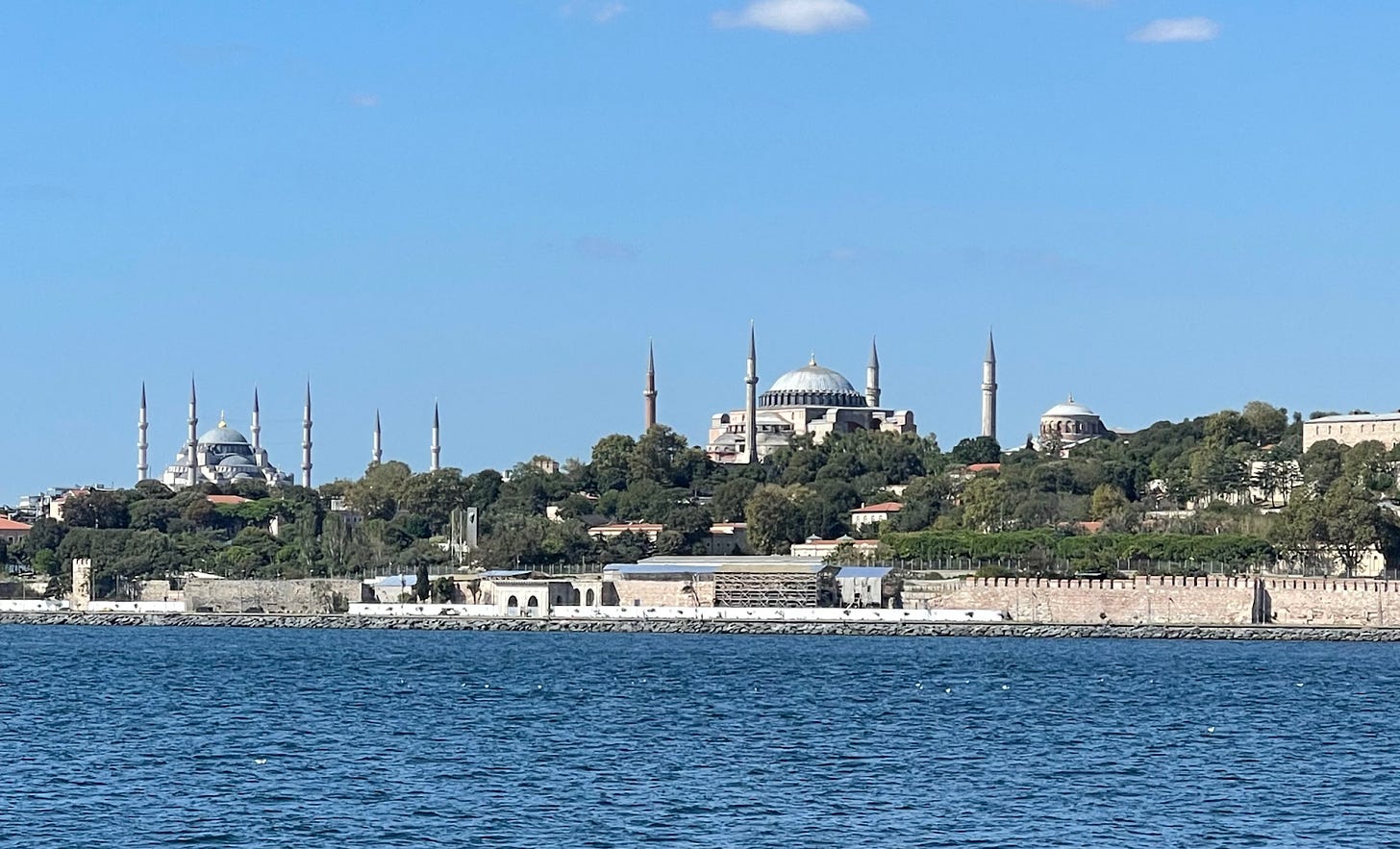
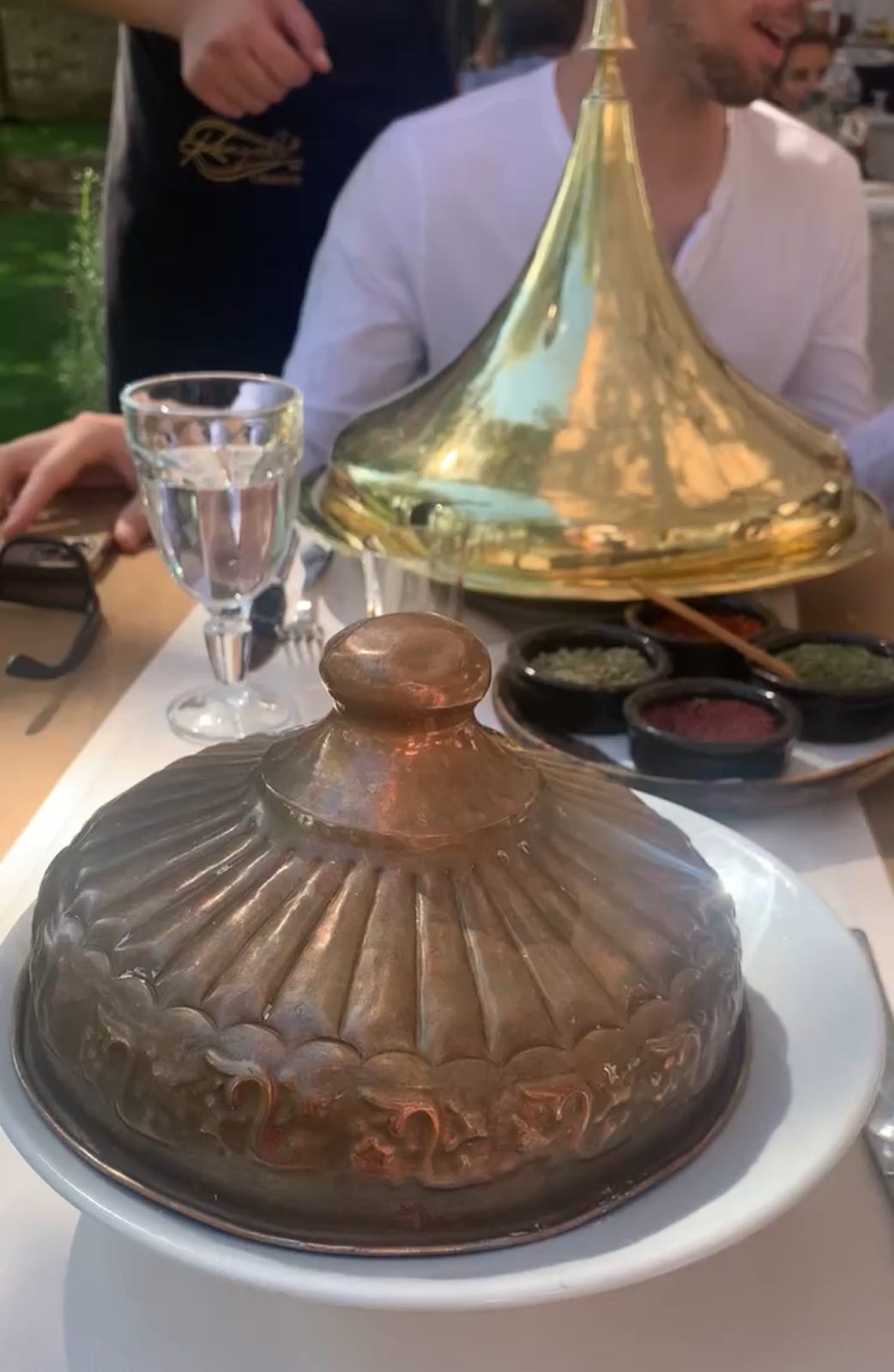
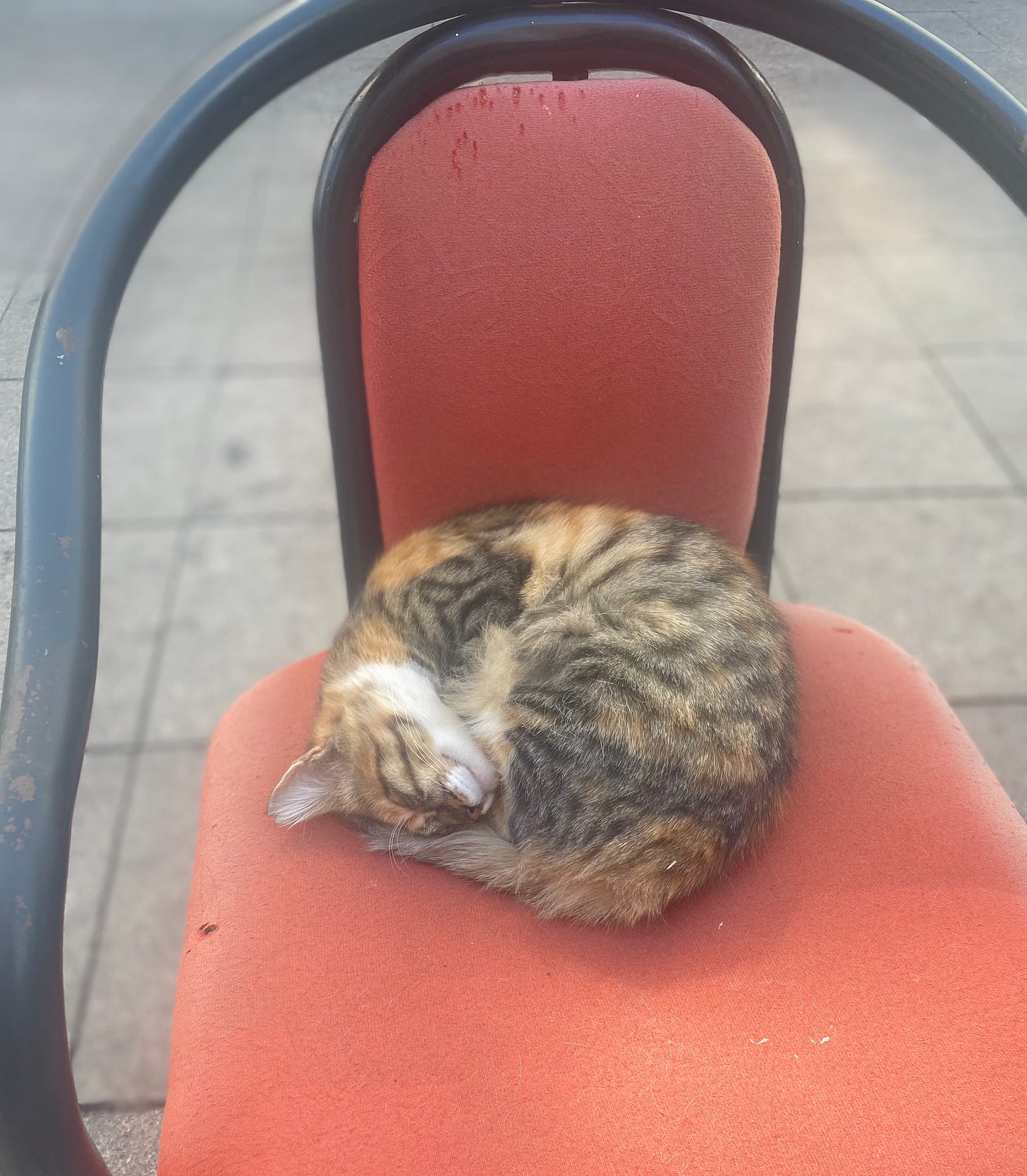
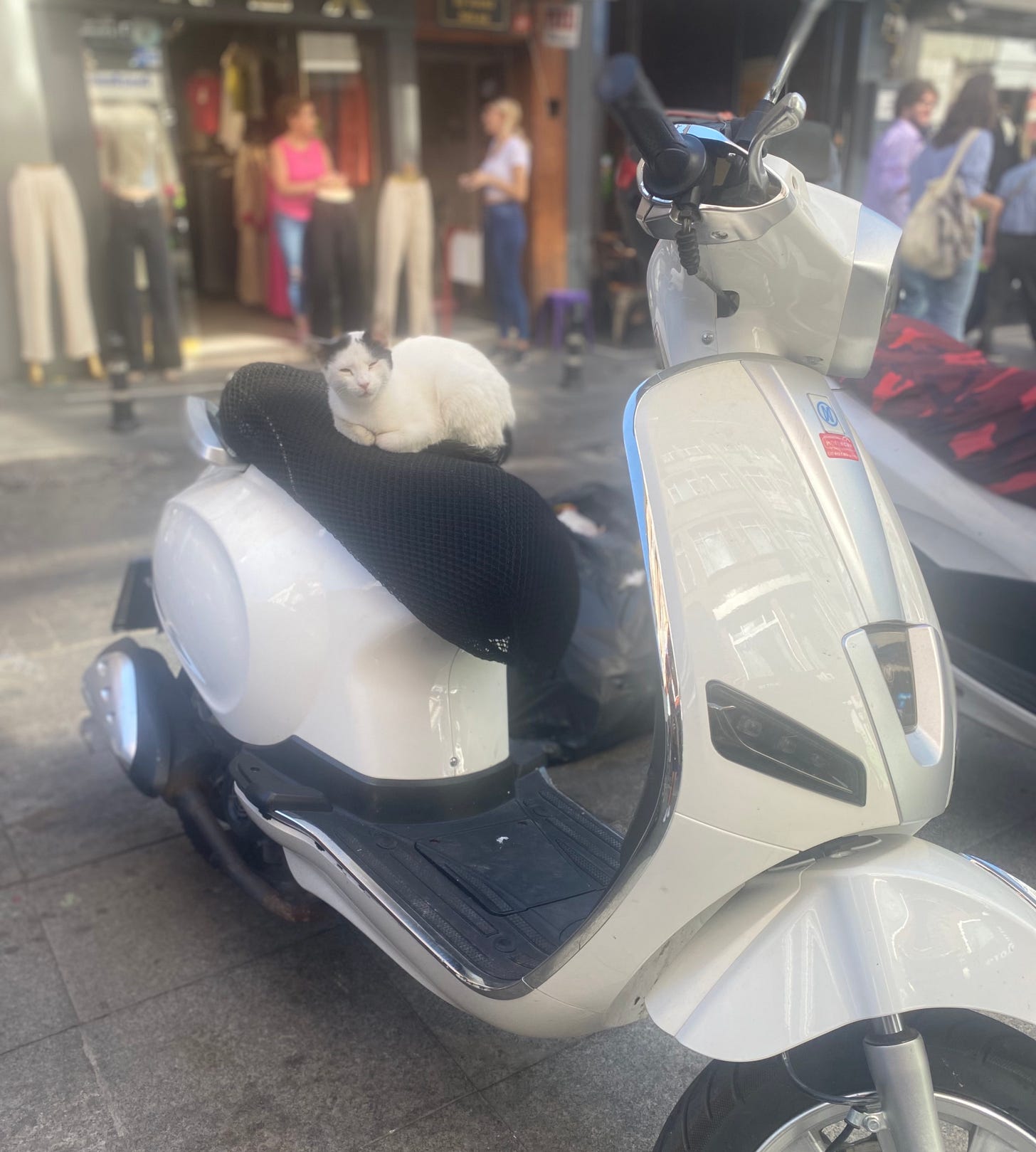
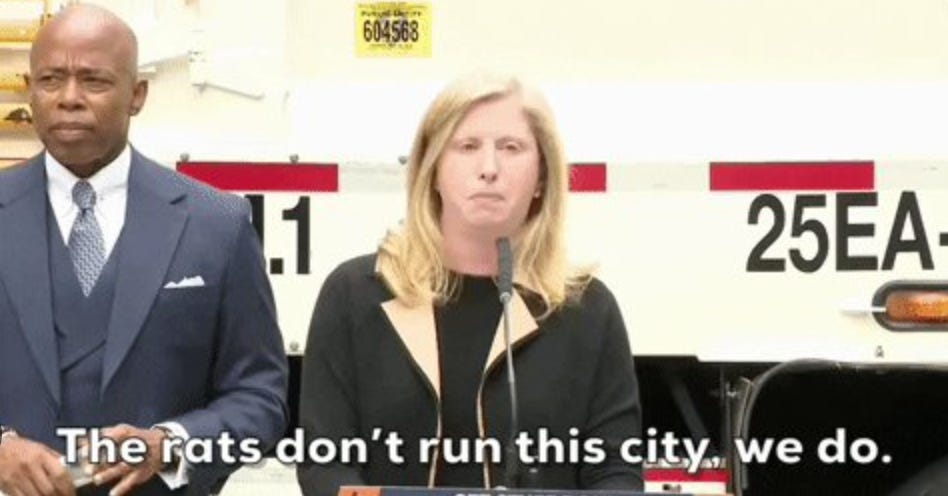
Loved it! Wish I read this before our trip!
Great article. I learned a lot. I wonder where Christianity would be now if it hadn’t been the religion of choice. Joseph Smith must of done his research !